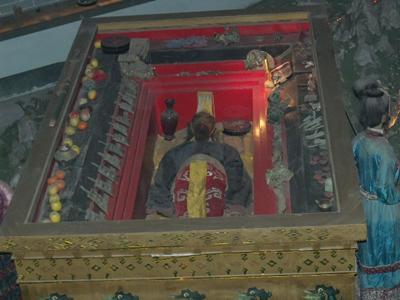
The Secrets of the First Emperor's Tomb: What Lies Beneath the Earth?
The tomb of Qin Shi Huang, China's first emperor, is one of the most fascinating and mysterious archaeological sites in the world. While the central tomb remains unopened, its surrounding area has yielded incredible treasures and insights into the life and afterlife beliefs of this ancient ruler.
An Army Frozen in Time
One of the most iconic discoveries associated with the tomb is the vast army of terra cotta warriors.
-
Scale and Scope: Nearly 200 pits have been excavated, revealing thousands of these life-size figures. These pits were carefully arranged, mimicking actual military formations with distinct divisions of infantry, archers, and charioteers.
-
Astonishing Detail: Each terra cotta warrior is unique, with individualized facial features, hairstyles, and armor details. This incredible realism suggests a massive workforce of skilled artisans laboring for years.
-
Military Might: Alongside the soldiers, archaeologists have unearthed terra cotta horses, painstakingly crafted and often depicted in dynamic poses. Bronze chariots, some even with their bronze horses still attached, highlight the advanced craftsmanship of the era. The presence of weapons further emphasizes the military focus of the tomb's design.
More Than Just Warriors
The terra cotta army is just one facet of this sprawling necropolis. The vastness of the site – spanning over 56.25 square kilometers – hints at the sheer scale of resources dedicated to the emperor's afterlife.
-
Burial Tombs and Remains: Archaeological investigations have uncovered numerous burial tombs within the complex. These likely belong to members of the emperor's court, concubines, and possibly even those who constructed the tomb itself.
-
Architectural Marvels: Beyond the burial pits, the site also features architectural remains of palaces, pavilions, and other structures. These offer a glimpse into the grandeur and sophistication of Qin Dynasty architecture and provide valuable context for understanding the tomb's layout.
A Legacy of Power and Mystery
While the central tomb of Qin Shi Huang remains unexcavated due to preservation concerns and potential dangers from ancient booby traps, its surrounding discoveries provide a window into the emperor's ambition and the beliefs of his time. The sheer scale of the site and the meticulous detail of its artifacts are a testament to the power and wealth of the first Chinese emperor and his vision of an eternal afterlife.
Q&A
Q: Why hasn't the central tomb been excavated?
A: Archaeologists are hesitant to excavate the central tomb for several reasons. First, there are concerns about preserving the fragile artifacts and murals potentially within. Second, historical accounts mention the tomb containing booby traps and dangerous levels of mercury, making excavation risky.
Q: What is the significance of the terra cotta army?
A: The terra cotta army is significant on multiple levels. It provides invaluable insights into the military organization and weaponry of the Qin Dynasty. The sheer artistry and craftsmanship showcased in each figure highlight the advanced skills of the time. Symbolically, the army represents the emperor's desire for power and protection in the afterlife.
Q: What else might be buried within the tomb complex?
A: Based on historical records, archaeologists believe the central tomb could contain a vast wealth of treasures, including precious jewels, silks, gold, and potentially even a map of the emperor's empire, complete with flowing rivers of mercury. However, until excavation occurs, these remain educated speculations.